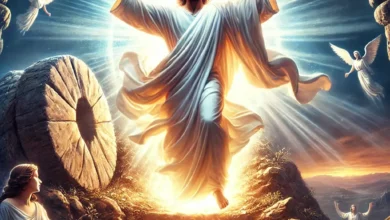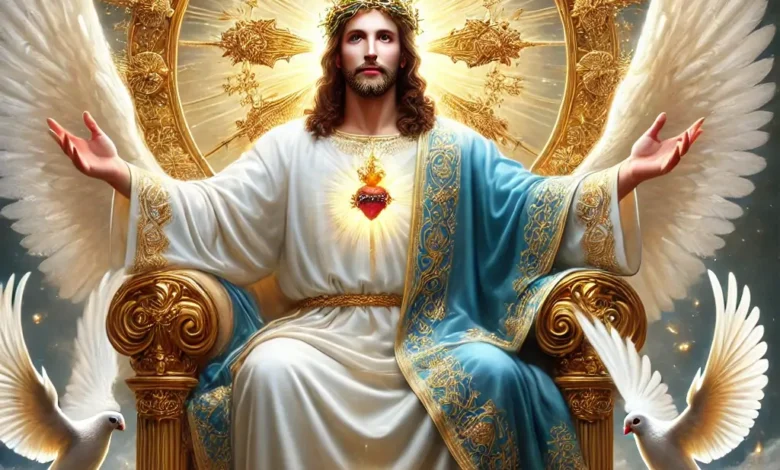
Download the article on the genealogy of Jesus Christ
فرست محتوا
- 1 Genealogy of Jesus Christ: Understanding the Lineage of the Messiah
- 1.1 Historical Context of Jesus’ Genealogy
- 1.2 Key Differences in the Genealogy of Jesus Christ
- 1.3 The Significance of Women in Jesus’ Genealogy
- 1.4 The Inclusion of Outsiders in Jesus’ Genealogy
- 1.5 Jesus Christ as the Good Shepherd
- 1.6 Symbolic Importance of the Number of Generations
- 1.7 Possible Reasons for the Differences
- 1.8 Theological Implications of Jesus’ Genealogy
- 1.9 Jesus as the Fulfillment of Old Testament Prophecies
- 1.10 Depictions of Jesus Christ in Art: Symbolism and Meaning
- 1.11 The Significance of Genealogy in Understanding God’s Plan
- 1.12 Understanding the Role of Genealogy in Faith
- 1.13 Jesus as the Bridge Between the Old and New Covenants
- 1.14 Importance of Genealogy in Ancient Cultures
- 1.15 Genealogy as a Tool for Understanding Jesus’ Mission
- 1.15.1 Frequently Asked Questions (FAQs) About the Genealogy of Jesus Christ
- 1.15.1.1 1. Why are there two different genealogies for Jesus Christ in the Gospels?
- 1.15.1.2 2. How does Matthew’s genealogy prove Jesus’ connection to King David?
- 1.15.1.3 3. What is the significance of the women mentioned in Matthew’s genealogy?
- 1.15.1.4 4. Why does Luke trace Jesus’ genealogy back to Adam?
- 1.15.1.5 5. How does Jesus’ genealogy fulfill Old Testament prophecies?
- 1.15.1.6 6. Why are the number of generations different in Matthew and Luke?
- 1.15.1.7 7. Why are there discrepancies in the names of ancestors between the two genealogies?
- 1.15.1.8 8. What role does Jesus’ genealogy play in Christian theology?
- 1.15.1.9 9. How does the genealogy of Jesus connect to salvation history?
- 1.15.1.10 10. How does Jesus’ genealogy affect His identity as the Messiah?
- 1.15.1 Frequently Asked Questions (FAQs) About the Genealogy of Jesus Christ
Genealogy of Jesus Christ: Understanding the Lineage of the Messiah
The genealogy of Jesus Christ is mentioned in two Gospels of the New Testament: The Gospel of Matthew (chapter 1) and The Gospel of Luke (chapter 3). However, the remarkable thing is that these two genealogies have differences with each other.

Historical Context of Jesus’ Genealogy
The genealogy of Jesus Christ is more than a list of names; it offers a profound insight into the historical and cultural backdrop of ancient Israel. The genealogies in the Gospels of Matthew and Luke both serve distinct theological purposes, reflecting not only the lineage of Jesus but also the values and beliefs of their respective audiences. For instance, Matthew’s genealogy emphasizes Jesus’ Jewish heritage, establishing Him as the rightful heir to King David’s throne, while Luke’s genealogy stretches back to Adam, symbolizing Jesus’ connection to all of humanity, not just the Jewish people.
By tracing Jesus’ ancestry through significant biblical figures such as Abraham, David, and Adam, both genealogies highlight His fulfillment of ancient prophecies. This positions Jesus not just as the Messiah for Israel but as a figure of universal importance.
Key Differences in the Genealogy of Jesus Christ
- Names of ancestors: In some stages, the names of ancestors mentioned in the two genealogies are different from each other.
- Number of generations: The number of generations mentioned between Abraham and Jesus is different in the two genealogies.
- The genealogical path: The genealogical path is different in the two gospels. Matthew traces the genealogy through Abraham, David, and Solomon, while Luke traces it through Abraham, David, and Nathan (David’s other son).
Key Facts About the Genealogy of Jesus Christ
| Aspect | Matthew’s Genealogy | Luke’s Genealogy |
|---|---|---|
| Lineage Focus | Royal lineage, through King David and Solomon | Natural lineage, through David and Nathan |
| Connection to Abraham | Directly connects Jesus to Abraham, highlighting His Jewish heritage | Also connects Jesus to Abraham, but emphasizes His universal role |
| Number of Generations | 14 generations from Abraham to David, 14 from David to the exile, and 14 from the exile to Jesus | More generations, spanning from Adam to Jesus |
| Purpose | To show Jesus as the legal heir to the throne of David | To present Jesus as the Savior for all mankind |
| Women Mentioned | Tamar, Rahab, Ruth, Bathsheba | No women mentioned |
The Significance of Women in Jesus’ Genealogy
One of the most remarkable aspects of Matthew’s genealogy is the inclusion of women, which was unusual in ancient genealogical records. Matthew specifically mentions Tamar, Rahab, Ruth, and Bathsheba. Each of these women played a unique and often challenging role in the history of Israel, demonstrating that God’s plan of salvation can work through unlikely and unexpected individuals.
The inclusion of these women in Jesus’ genealogy is seen by many scholars as a reflection of the inclusive nature of Jesus’ ministry, where social norms are overturned and all people—regardless of their background—are welcomed into God’s kingdom. Their presence in the genealogy not only highlights the importance of women in the story of salvation but also foreshadows the way Jesus would later elevate and honor women in His ministry.
The Inclusion of Outsiders in Jesus’ Genealogy
One fascinating aspect of Jesus’ genealogy is the inclusion of individuals who were not part of the Jewish community, such as Ruth and Rahab. Their stories reflect the universal nature of God’s plan for salvation, which includes those considered outsiders by societal standards. This element of Jesus’ genealogy emphasizes the breaking down of barriers between nations, showing that faith, rather than heritage, defines one’s place in God’s family.
Rahab, a Canaanite woman from Jericho, played a crucial role in the survival of Israelite spies, leading to her being grafted into the genealogy of the Messiah. Similarly, Ruth, a Moabite, was brought into God’s people through her loyalty to her mother-in-law Naomi and her marriage to Boaz, from which King David descended.
Symbolism of Inclusion
The presence of these non-Jewish figures in Matthew’s genealogy of Jesus represents the expansion of God’s covenant to all nations. It underscores the message that Jesus’ mission was not limited to one group but was intended for all who would follow Him, regardless of their background or past. The inclusion of Gentiles like Rahab and Ruth is symbolic of the invitation extended to all humanity to partake in God’s redemptive plan.
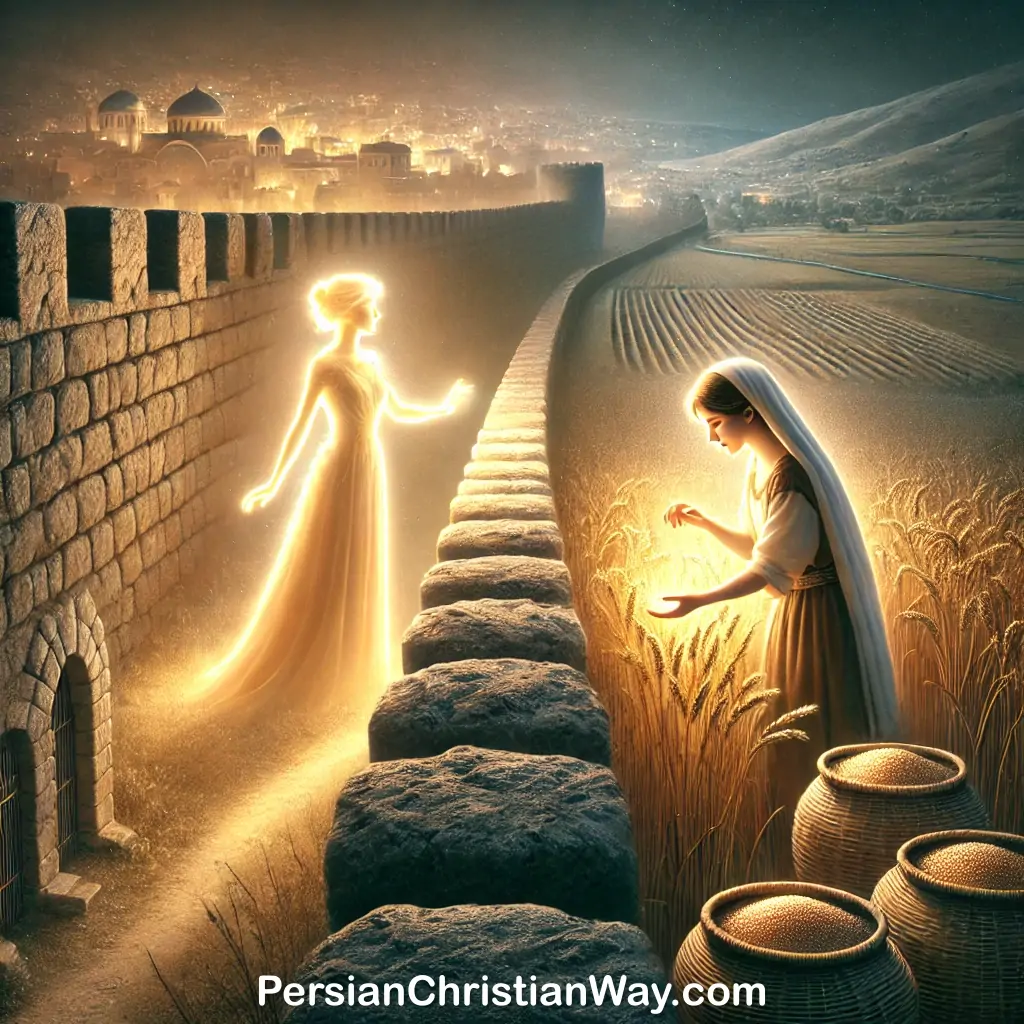
Jesus Christ as the Good Shepherd
One of the most well-known depictions of Jesus Christ is as the Good Shepherd. In this role, Jesus is seen as the guardian and protector of the sheep, symbolizing the faithful. This image appears in many Christian artworks, showing Jesus holding a lamb or guiding sheep. The Good Shepherd is a symbol of care, guidance, and Jesus’ deep love for His followers. Like a shepherd who protects his flock, Jesus protects humanity and guides them toward salvation. This imagery beautifully highlights Jesus’ role as a leader and guide, as referenced throughout the Bible.
The Good Shepherd symbolizes Jesus’ spiritual leadership and care, emphasizing His mission to lead people toward truth and redemption. In the Gospel of John, Jesus refers to Himself as the Good Shepherd, saying that the Good Shepherd lays down His life for the sheep.
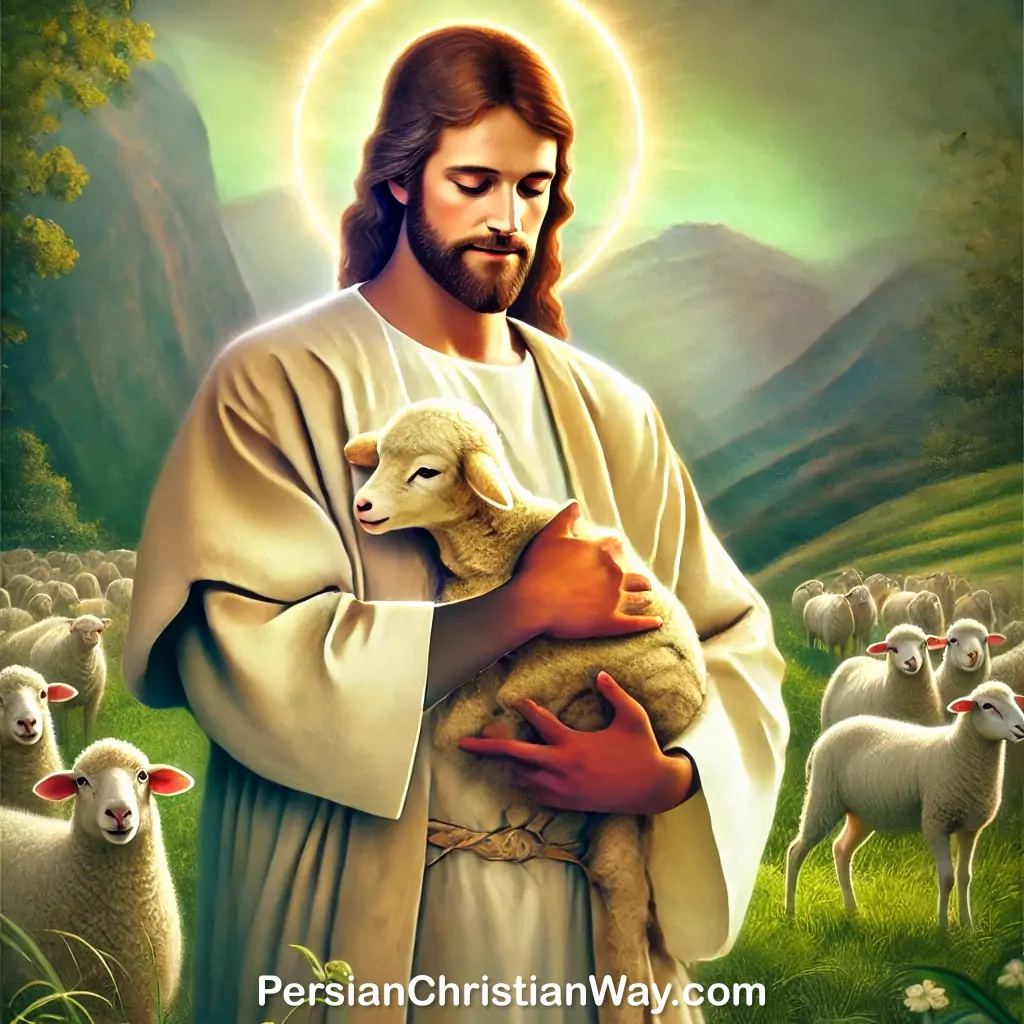
Symbolism of the Good Shepherd in Christian Faith
The image of Jesus Christ as the Good Shepherd is one of the most powerful symbols in Christianity. It emphasizes the spiritual leadership and guidance He provides toward truth and salvation. Just as a shepherd protects his sheep from danger, Jesus protects His followers from spiritual harm. This image is a visual representation of the passage in the Gospel of John, where Jesus declares Himself the Good Shepherd who gives His life for His sheep.
Symbolic Importance of the Number of Generations
In Matthew’s genealogy, the number of generations between significant events—such as Abraham to David, David to the Babylonian exile, and the exile to Jesus—follows a pattern of fourteen generations. Some scholars believe that this pattern symbolizes completeness and divine order, as the number fourteen is significant in Jewish numerology. This structured approach underlines Jesus as the fulfillment of God’s plan throughout history.
On the other hand, Luke’s genealogy includes more generations, reflecting a broader, less structured view of history, one that traces Jesus’ lineage all the way back to Adam, representing Jesus as the new beginning for all humanity. Luke’s approach reflects a universal theology, showing that Jesus is not just a descendant of kings, but of every man and woman.
Symbolism in Jesus’ Genealogy
The genealogies of Jesus Christ are filled with symbolic elements that reflect deeper spiritual truths. For instance, the inclusion of figures like Rahab and Ruth, who were Gentiles, symbolizes the breaking down of barriers between Jews and Gentiles in God’s plan of salvation. These women’s stories also point to the grace and redemption that God offers to all people, regardless of their background or past.
Moreover, the structure of Matthew’s genealogy, with its three sets of fourteen generations, is seen by many scholars as a reflection of God’s divine order. This structured genealogy emphasizes Jesus as the culmination of Israel’s history and the one who brings completion to God’s redemptive plan. In contrast, Luke’s genealogy, with its broader scope, underscores Jesus’ connection to all humanity, emphasizing His role as the Savior for everyone.
Possible Reasons for the Differences
- Different goals: Some believe that Matthew and Luke had different goals in mentioning the genealogy. Matthew may have intended to show that Jesus is related to the Jews through the royal line of David, while Luke may have been intended to show that Jesus is related to all mankind as the “son of Adam.”
- Different sources: Matthew and Luke may have used different sources to compile the genealogy, such as oral traditions or genealogical texts.
- Mistakes: Some researchers believe that mistakes may have occurred in the transmission of genealogies over time.
Differences in Genealogy and Theological Significance
While the genealogies in Matthew and Luke differ, these differences carry deep theological meaning. Matthew’s genealogy follows a royal line, emphasizing Jesus’ legal right to the throne of David, whereas Luke’s genealogy highlights His natural descent, connecting Him to all of humanity through Adam. This dual portrayal reflects Jesus’ identity as both the Jewish Messiah and the universal Savior of mankind.
The significance of these two genealogies lies in their combined theological message: Jesus is not only the King of Israel but also the Savior for all people, regardless of nationality or lineage. The variation in the genealogical paths highlights the multifaceted nature of His mission and His role in fulfilling God’s plan for salvation across all generations.
Theological Implications of Jesus’ Genealogy
Jesus’ genealogy holds deep theological significance for Christianity. Matthew’s account presents Jesus as the fulfillment of the Jewish messianic prophecies, portraying Him as the long-awaited king who would restore Israel. In contrast, Luke’s account emphasizes Jesus’ role as the Savior of all people, Jews and Gentiles alike. By tracing His lineage to Adam, Luke presents Jesus as a new Adam, a figure who would redeem humanity from the sin introduced by the first man.
Both genealogies reflect on Jesus’ dual nature as both fully divine and fully human. While Matthew emphasizes His royal lineage, fulfilling the Old Testament prophecies about a descendant of David, Luke underscores His universal mission to bring salvation to all people. The genealogies thus provide insight into Jesus’ identity and His role in salvation history.

Jesus as the Fulfillment of Old Testament Prophecies
Throughout the Old Testament, prophecies regarding the coming of a Messiah are scattered, pointing to a future descendant of David who would reign over Israel and bring salvation to all nations. Both Matthew and Luke’s genealogies trace Jesus Christ back to King David, firmly establishing Him as the fulfillment of these ancient prophecies.
For example, the prophecy in Isaiah 9:7 speaks of a ruler who will sit on David’s throne and establish a kingdom of peace. By tracing Jesus’ genealogy through David, the Gospels underscore His messianic role and His divine purpose. Jesus is not only a descendant of David by bloodline but also the long-awaited King who fulfills God’s covenant promises made in the Old Testament.
The Role of Jesus’ Genealogy in Christian Theology
The genealogy of Jesus Christ plays a crucial role in understanding Christian theology. It connects Jesus to key figures in both the Old and New Testaments, fulfilling the messianic prophecies that predict the arrival of a savior from the line of David. This genealogical connection establishes Jesus not just as a religious figure, but as a historical continuation of God’s covenant with humanity.
Through this lineage, Jesus is seen as the ultimate fulfillment of God’s promise to Abraham and David, bridging the gap between humanity and the divine. This genealogical tracing is not only essential to understanding Jesus’ divine mission but also reinforces His identity as the prophesied Messiah. Thus, the genealogy acts as a theological anchor, connecting Old Testament promises with New Testament fulfillment.
Depictions of Jesus Christ in Art: Symbolism and Meaning
Throughout history, images of Jesus Christ have served as powerful symbols of His divinity, humanity, and role as the Savior. Artistic depictions often feature key elements that represent His teachings and the fulfillment of biblical prophecies. The portrayal of Jesus with long hair, a beard, and compassionate eyes reflects the ideal of the Good Shepherd, who guides and cares for His followers. His robes, often depicted in white and blue, symbolize purity and divine authority, while the halo around His head signifies His holiness and connection to God.
One of the most iconic representations is Jesus with hands in prayer, embodying His role as a mediator between humanity and God. This humble posture is a visual reflection of His teachings on prayer and faith, as highlighted in the New Testament. The use of light and a glowing halo in these depictions underscores His divine nature, reinforcing the belief in Jesus as both fully human and fully divine.
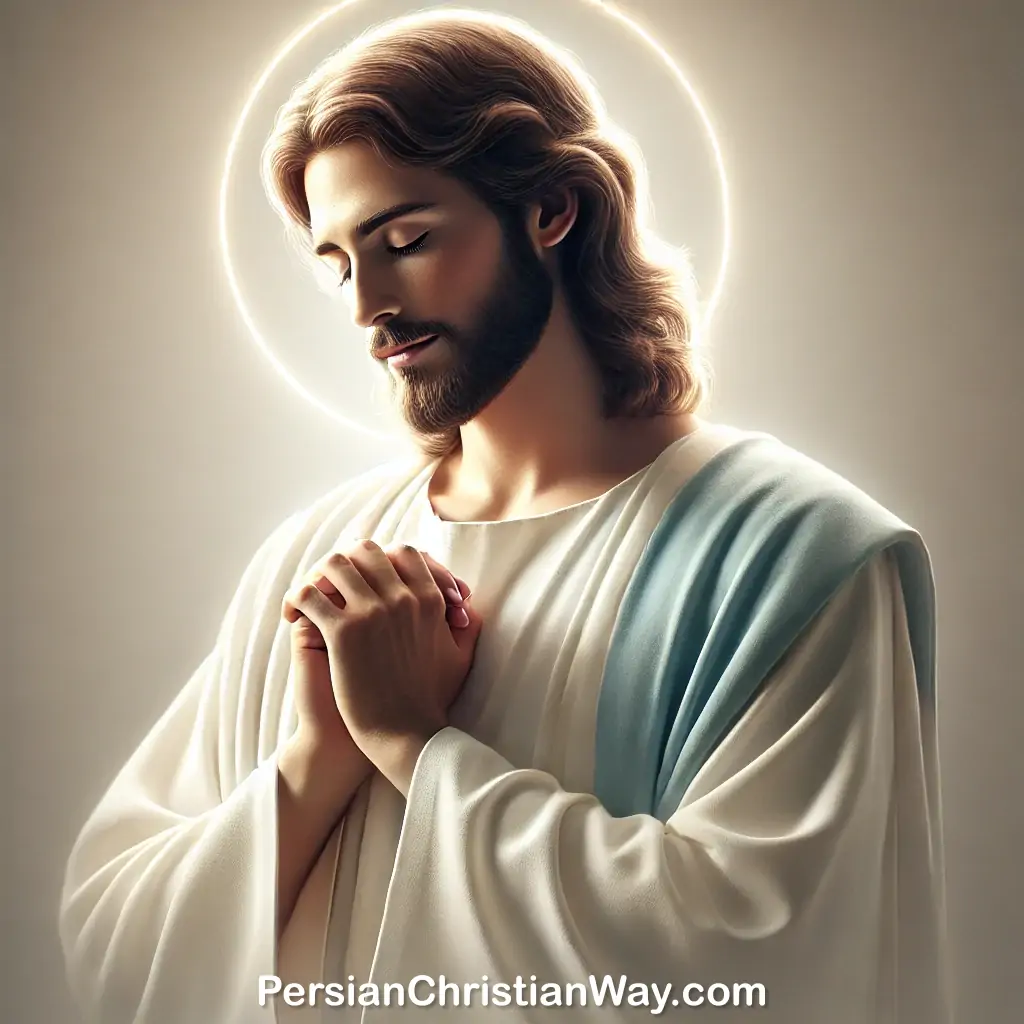
The Significance of Artistic Representations in Christian Faith
Artistic depictions of Jesus Christ serve as visual reminders of His life, ministry, and sacrifice. These images help believers connect with key moments of His life, such as the Last Supper, the Crucifixion, and the Resurrection. Each artistic detail, from the color of His robes to the expression on His face, carries deep theological meaning, reinforcing His role as the Messiah and Savior.
Moreover, images of Jesus often transcend cultural boundaries, adapting to reflect the ethnicity and identity of different Christian communities. This universality of representation reflects the belief that Jesus came for all people, fulfilling His role as the Savior of humanity.
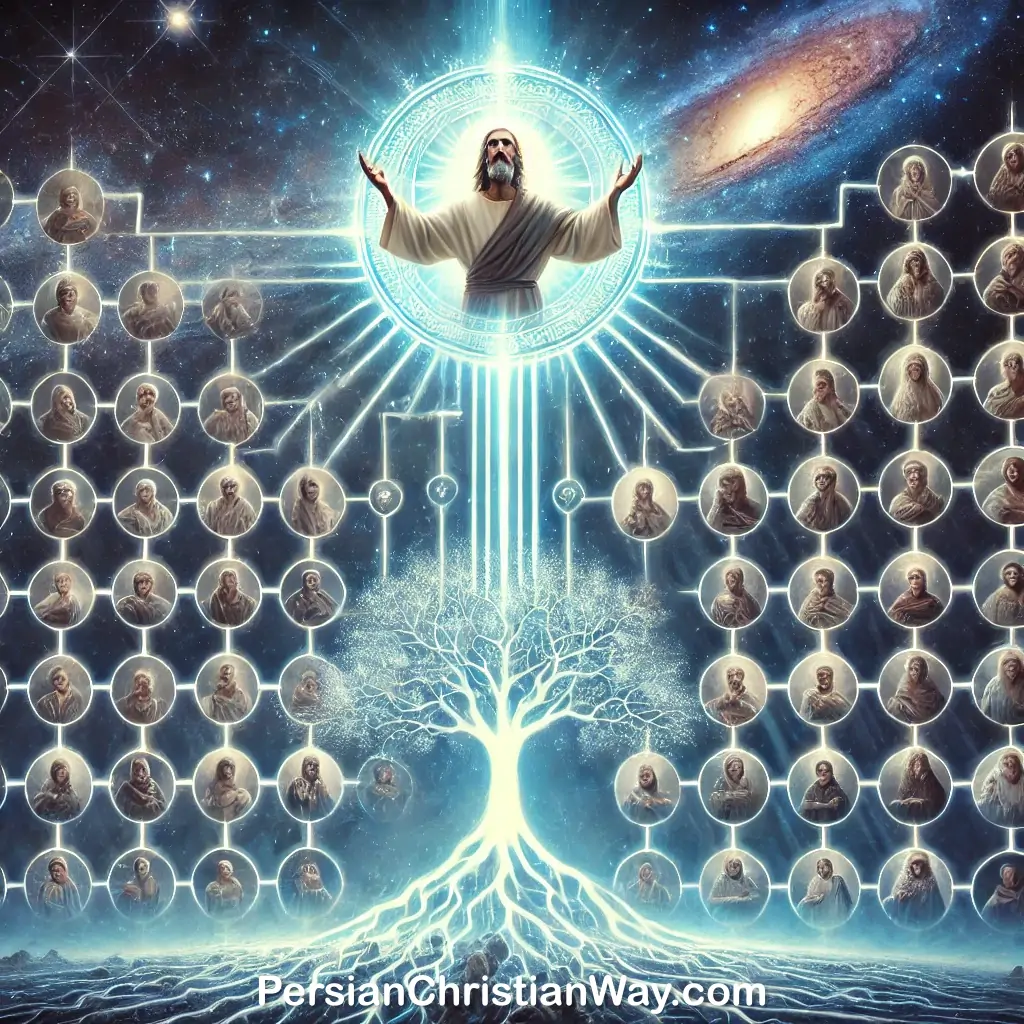
The Significance of Genealogy in Understanding God’s Plan
Genealogy plays a vital role in the Bible, particularly in the New Testament, as it offers a profound connection between God’s promises in the Old Testament and their fulfillment through Jesus Christ. The genealogies presented in the Gospels of Matthew and Luke are not just historical records; they serve as theological statements that reflect God’s plan for the redemption of humanity.
Genealogy as a Symbol of Continuity
Throughout the Bible, genealogies represent more than a lineage of names—they symbolize continuity, faithfulness, and the unfolding of God’s covenant with humanity. The lineage of Jesus Christ, in particular, is a powerful testimony of God’s commitment to fulfill His promises through successive generations.
Connection to Abraham and David
Both Matthew and Luke emphasize the connection between Jesus and key biblical figures such as Abraham and David. This connection reaffirms the promises God made to Abraham about the blessing of all nations through his descendants (Genesis 12:3) and the promise made to David that his throne would be established forever (2 Samuel 7:16). By tracing Jesus’ genealogy through these figures, the Gospels highlight that He is the fulfillment of God’s covenant with His people.
Symbolism of the Number 14 in Matthew’s Genealogy
The structure of Matthew’s genealogy, which includes three sets of fourteen generations, holds symbolic significance. Many scholars believe that the number 14 represents “completion” or “perfection” in Jewish numerology, which emphasizes Jesus as the complete fulfillment of the promises made in the Old Testament.
The Universality of Jesus’ Mission
Luke’s genealogy, by tracing Jesus’ lineage back to Adam, emphasizes the universality of His mission. While Matthew focuses on the royal and Jewish lineage, Luke reminds us that Jesus Christ came not only for the Jewish people but for all humanity. By linking Jesus directly to Adam, the father of all humans, Luke reinforces the message that Jesus is the Savior of the entire world.
The New Adam
In Christian theology, Jesus Christ is often referred to as the “new Adam.” This concept is crucial because just as sin entered the world through the first man, Adam, salvation and redemption come through Jesus, the “new Adam.” Luke’s genealogy thus serves as a theological statement that Jesus is the one who restores what was lost through Adam’s fall.
Genealogy and the Concept of Redemption
By including individuals with diverse backgrounds, both genealogies of Jesus Christ reflect the theme of redemption. Figures such as Rahab and Ruth, who were not of Jewish descent, are prominently mentioned in Matthew’s genealogy. Their inclusion symbolizes that Jesus’ mission is not limited by nationality or heritage, but is meant for all people who seek God’s grace and redemption.
The Role of Redemption in Genealogy
The genealogies emphasize that God can work through unexpected individuals and situations to bring about His divine plan. This message of redemption is central to Christian theology, as it reflects how God’s grace is available to everyone, regardless of their background. The inclusion of non-Jewish figures in Jesus’ lineage also signifies that Jesus is the Redeemer of all nations.
Understanding the Role of Genealogy in Faith
The genealogy of Jesus Christ is not merely a historical document—it is a reflection of faith, continuity, and the fulfillment of God’s promises. By studying this genealogy, Christians can gain a deeper understanding of how God’s plan has unfolded through history, ultimately leading to the coming of the Messiah.
The Faithful Lineage of Jesus
Each name mentioned in the genealogies of Jesus represents a story of faith, struggle, and triumph. These genealogies remind believers that God is faithful to His promises and that each individual plays a part in His greater plan for humanity. The stories of individuals like Abraham, David, and even those less well-known, show that God’s grace is evident throughout every generation.
Personal Reflection and Application
As believers reflect on the genealogies of Jesus Christ, they are encouraged to see their own lives as part of God’s redemptive story. Just as God worked through the lives of those in Jesus’ lineage, He continues to work through His people today, calling them to be part of His ongoing mission of love, grace, and redemption.
Importance of Genealogy
Despite these differences, the genealogies of Jesus Christ are of great importance in Christianity:
- Connection to Judaism: They show that Jesus is a descendant of Abraham, the father of the Jews, and link him to Jewish tradition and history.
- Prophecy function: Some Christians believe that Jesus’ genealogy fulfills Old Testament prophecies about the promised Messiah who would be a descendant of David.
- Identity of Jesus: Genealogy helps to understand the identity of Jesus as “Son of God” and “Son of Man.”
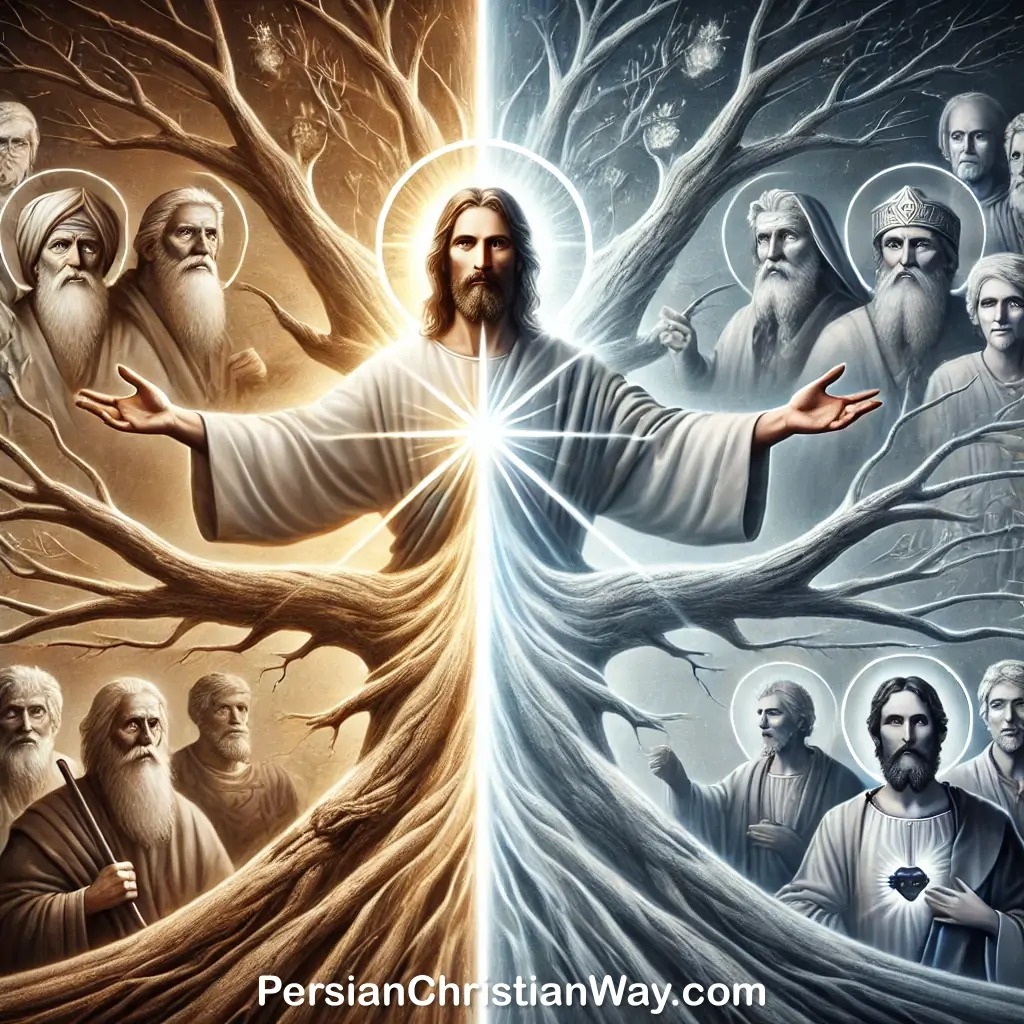
Jesus as the Bridge Between the Old and New Covenants
By studying the genealogy of Jesus Christ, we see how He serves as the bridge between the Old and New Covenants. The Old Covenant, as presented in the Hebrew Scriptures, was a promise made to the people of Israel, with figures like Abraham and David playing crucial roles. In both Matthew and Luke’s genealogies, Jesus is linked directly to these foundational figures, establishing Him as the rightful heir to the promises of the Old Covenant.
However, Jesus’ role goes beyond mere continuation; He brings a new covenant through His life, death, and resurrection. This New Covenant is open to all people, not just the descendants of Israel. In this way, the genealogy serves as a symbolic transition, connecting the old promises to the new reality of salvation through Jesus.
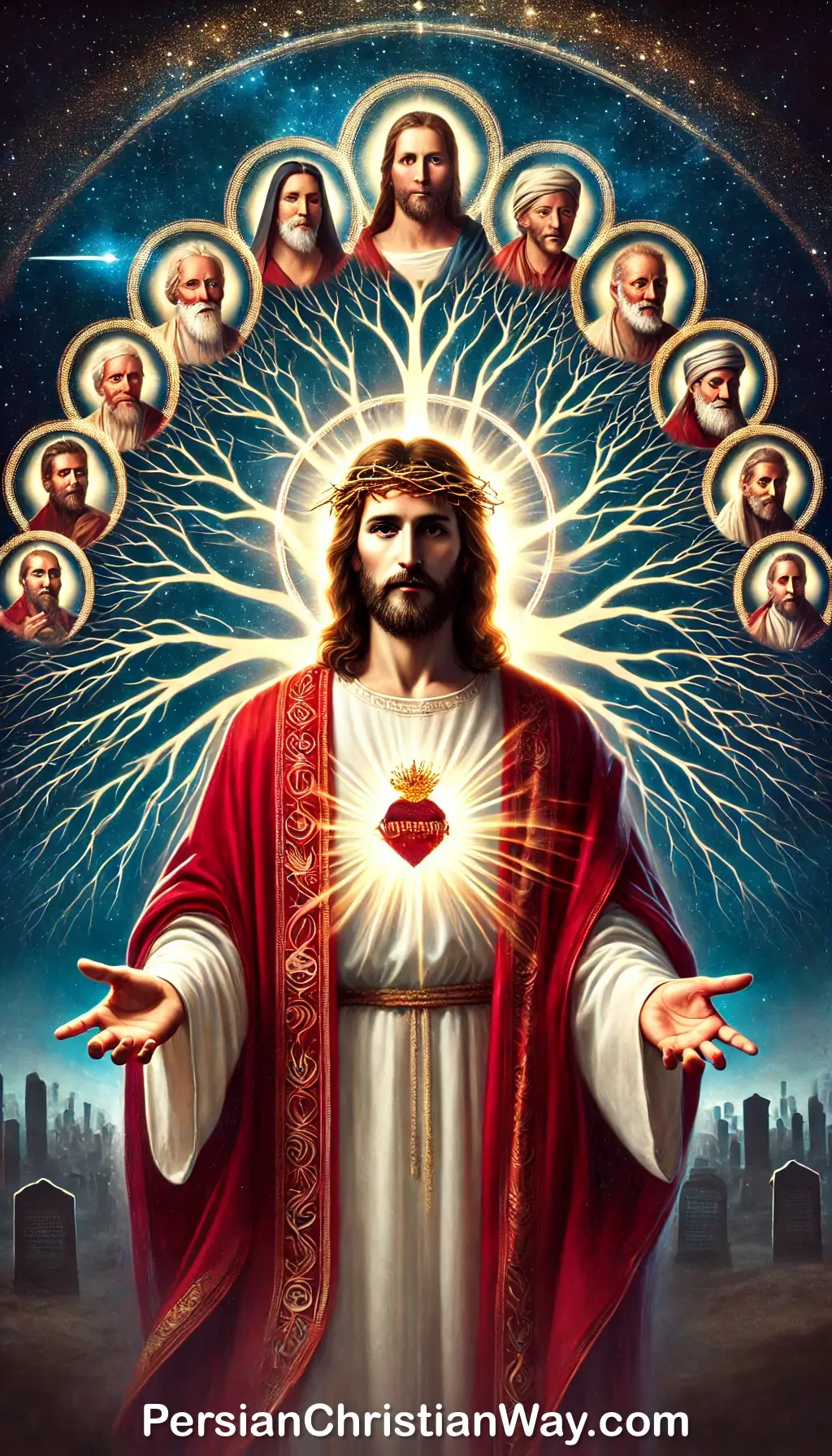
Jesus’ Genealogy and Its Relation to Salvation History
The genealogy of Jesus Christ connects the story of salvation across the entire Bible. From the covenant with Abraham to the establishment of the Davidic kingdom, Jesus’ genealogy encapsulates the entirety of salvation history. By being the direct descendant of Abraham and David, Jesus becomes the bridge that fulfills the promises of the Old Testament, linking them to the New Covenant.
This historical connection shows that salvation is not a random event but a carefully orchestrated plan of God, initiated in the Old Testament and fulfilled through Jesus. His genealogy serves as a reminder that God’s promises are eternal and His plan for salvation is inclusive of all peoples, bringing them under the same covenant through Jesus Christ.
Importance of Genealogy in Ancient Cultures
In ancient Jewish and many other Near Eastern cultures, genealogies were crucial for establishing one’s identity, inheritance rights, and social status. A person’s genealogy was not just a record of ancestors but a critical document that defined their role and legitimacy in society. In this light, the genealogy of Jesus Christ in the Gospels serves to affirm His rightful place within both the Jewish tradition and the broader human story.
By linking Jesus to key figures like Abraham and David, Matthew’s genealogy asserts His messianic legitimacy, while Luke’s genealogy emphasizes His connection to all of humanity. Both genealogies highlight Jesus’ unique role in bridging the gap between God and mankind, fulfilling the promises made throughout the Old Testament.
Genealogy as a Tool for Understanding Jesus’ Mission
The genealogy of Jesus Christ offers more than just a historical record; it provides insight into His divine mission. By tracing Jesus’ lineage through both royal and ordinary ancestors, the Gospels emphasize that His mission is both kingly and servant-hearted. Matthew’s focus on King David and the royal lineage underscores Jesus’ role as the true King, while Luke’s broader genealogical approach, stretching back to Adam, shows that Jesus is the redeemer of all humanity.
This duality—being both King and servant—reflects the heart of Jesus’ ministry. He came not to rule through political power but to serve, to sacrifice, and to save. The genealogies thus help us understand the breadth and depth of His mission, connecting Him to both the Jewish people and all of humanity. This connection strengthens the message that Jesus is the universal savior, fulfilling God’s plan for redemption.
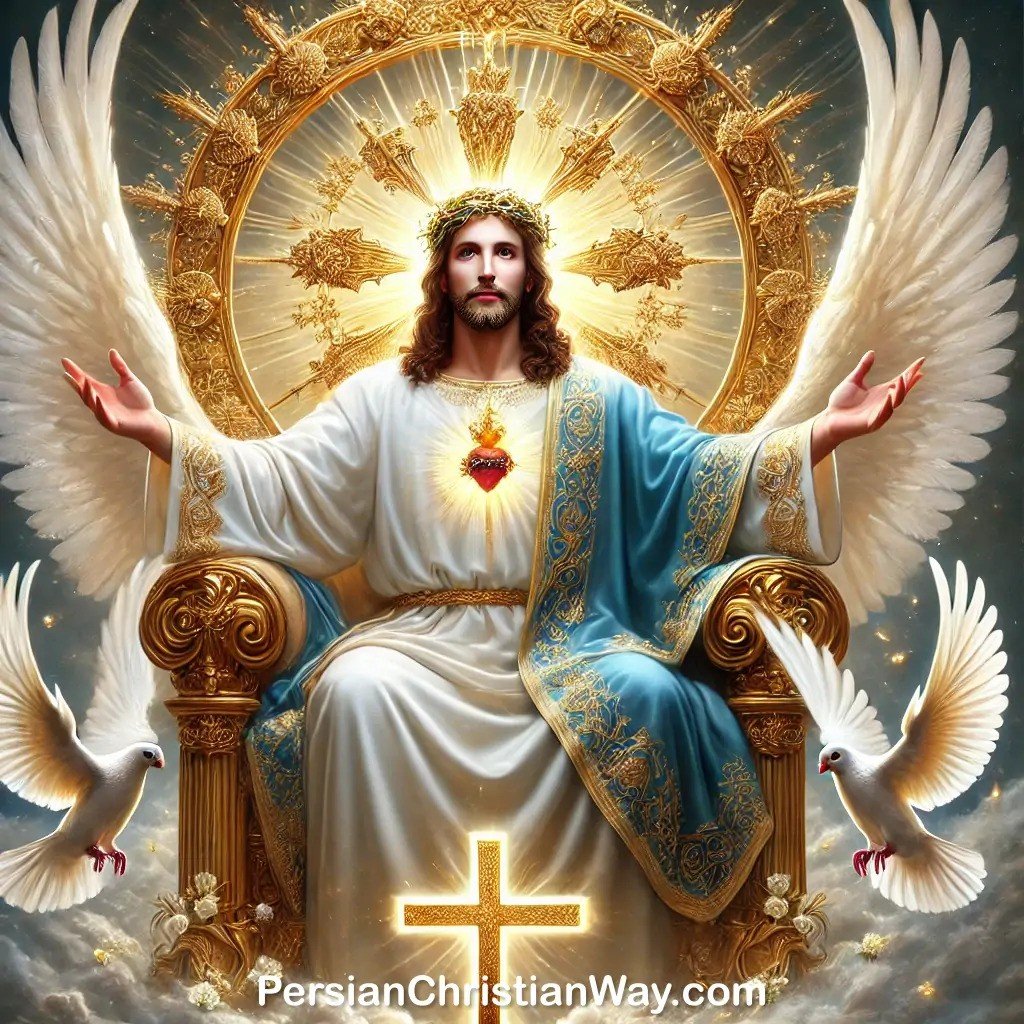
Frequently Asked Questions (FAQs) About the Genealogy of Jesus Christ
1. Why are there two different genealogies for Jesus Christ in the Gospels?
The Gospels of Matthew and Luke present two different genealogies to highlight different aspects of Jesus’ identity. Matthew emphasizes Jesus’ royal lineage through David and Solomon, while Luke traces a more natural lineage through David and Nathan, connecting Jesus to all humanity.
2. How does Matthew’s genealogy prove Jesus’ connection to King David?
Matthew’s genealogy explicitly connects Jesus to King David by tracing His lineage through Solomon, establishing Jesus as the rightful heir to the Davidic throne and fulfilling Old Testament prophecies about the Messiah.
3. What is the significance of the women mentioned in Matthew’s genealogy?
The inclusion of women like Tamar, Rahab, Ruth, and Bathsheba in Matthew’s genealogy is significant because it was uncommon in Jewish genealogical records. Their inclusion highlights the grace and inclusivity of God’s plan of salvation.
4. Why does Luke trace Jesus’ genealogy back to Adam?
Luke traces Jesus’ genealogy back to Adam to emphasize Jesus’ role as the Savior for all humanity, not just for the Jews. This universal approach highlights Jesus as the “new Adam,” who brings redemption for all people.
5. How does Jesus’ genealogy fulfill Old Testament prophecies?
Both genealogies show Jesus as a descendant of King David, fulfilling prophecies in the Old Testament that foretold the coming of a Messiah from David’s lineage, such as those in Isaiah and Jeremiah.
6. Why are the number of generations different in Matthew and Luke?
Matthew organizes his genealogy into three sets of fourteen generations, possibly to symbolize completeness and divine order. Luke’s genealogy is longer, reflecting a broader historical view and connecting Jesus back to Adam.
7. Why are there discrepancies in the names of ancestors between the two genealogies?
The differences in the names of ancestors can be attributed to the different purposes of the genealogies. Matthew’s genealogy focuses on legal descent, while Luke’s emphasizes biological descent. Additionally, different sources may have been used.
8. What role does Jesus’ genealogy play in Christian theology?
Jesus’ genealogy is central to Christian theology as it establishes His rightful place in salvation history, fulfilling Old Testament prophecies and demonstrating His dual nature as both the Son of God and the Son of Man.
9. How does the genealogy of Jesus connect to salvation history?
The genealogy connects Jesus to key figures like Abraham and David, showing that He is the fulfillment of God’s promises and the link between the Old and New Covenants, thereby playing a central role in salvation history.
10. How does Jesus’ genealogy affect His identity as the Messiah?
Both genealogies establish Jesus as the promised Messiah, with Matthew emphasizing His royal and legal authority, and Luke emphasizing His universal mission as the Savior for all of humanity.





